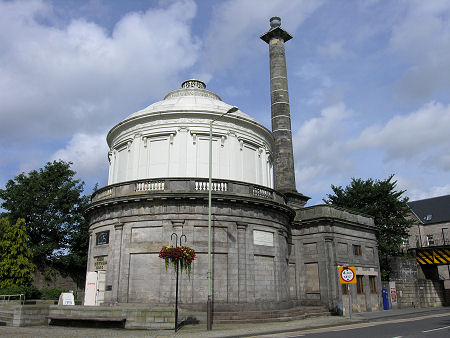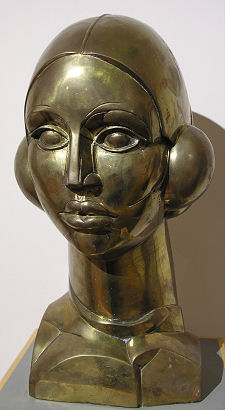 The Fergusson Gallery in Perth |
John Duncan Fergusson, lived from 9 March 1874 to 30 January 1961. He was one of the few British artists to participate in the Impressionist revolution in art that took place in Paris in the years before the First World War. He was a key member of the movement known as the Scottish Colourists, and a large collection of his work is on view in the Fergusson Gallery in Perth. The wider picture in Scotland at the time is set out in our Historical Timeline.
Fergusson was born at 7 Crown Street, Leith, and was the oldest of four children. Both his parents were from Pitlochry, and Fergusson always regarded Highland Perthshire as his spiritual home.
After attending the Royal High School, Fergusson went on to study medicine at Edinburgh University as a step towards an ambition of becoming a naval surgeon. He left after only a few months, however, instead enrolling at the Trustees Academy in Edinburgh to train as an artist. Within a few more months he had decided that the approach taken at the Academy was not for him, and he left in order to train himself as an artist.
In the 1890s Fergusson travelled in Spain and Morocco before deciding that France was the place to be. Between 1895 and 1907 he made repeated visits from his home in Edinburgh to France, working alongside many of the key artists of the day. In 1907 he rented a studio in Paris and settled there full time. Outgoing and enthusiastic, Fergusson fitted perfectly into the artistic community that was so active on the Left Bank of the River Seine at the time, meeting and swapping ideas with artists like Picasso, Matisse and Derain. Within a fairly short time, Fergusson had become a fixture on the Paris art scene, and he was a leading member of an active community of expatriate painters living in the city.
In 1913 Fergusson met a 22-year old English dancer, Margaret Morris, who was touring in Paris with her own dance company. The two fell in love and were to become lifelong companions. Later in the year, Fergusson left Paris to settle on the French Mediterranean coast, where Margaret Morris was a regular visitor between managing her own commitments in London. When war erupted in August 1914, Fergusson moved to London to be with Margaret Morris. His only notable work during the war was a series of paintings of the naval dockyard in Portsmouth, commissioned by the Government.
Fergusson produced a series of Scottish landscapes after a visit in 1922, but he spent most of the 1920s in London working with the dancers of Margaret's dance company. During this time he became a friend of Charles Rennie Mackintosh. In 1929 John Duncan Fergusson and Margaret Morris moved to Paris, where once more he fitted perfectly into an active artistic community. Meantime he had become a key member of a group of Scottish painters who were later to become known as the Scottish Colourists.
With the outbreak of another war in 1939, Fergusson once more returned to Britain with Margaret Morris, this time settling in Glasgow. Margaret Morris established the Celtic Ballet, and the two collaborated in the setting up of the New Art Club, which became a focus for artistic development amongst many Scottish painters. They remained in Glasgow after the war, though each year the two would spend time in France where Margaret Morris ran summer dance schools. In 1950 Fergusson was awarded an honourary degree by Glasgow University.
John Duncan Fergusson died in 1961 at the age of 86. He had been one of the last survivors of the era of the Impressionists in Paris in the years before the First World War, and his impact on the development of art in Scotland, and beyond, was dramatic, wide ranging and enduring.
After Fergusson's death, Margaret Morris established the JD Fergusson Art Foundation to look after a large collection of his work. Margaret Morris died in 1980, but the Foundation lived on, with the primary aim of finding a permanent home for the collection. On 6 March 1992 the Fergusson Gallery opened in Perth, housed in a converted waterworks. A major renovation between 2003 and 2005 has ensured that the Fergusson Gallery will continue to make Fergusson's work available to the widest possible audience for the foreseeable future.


